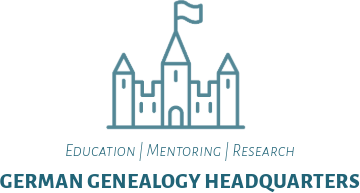Industrialization and Migration: Tracing 19th-Century German Ancestors in a Changing World
Discover how the rapid industrial transformation of 19th-century Germany reshaped the lives of millions and triggered widespread migration across Europe. This four-part series unpacks the powerful forces behind this era’s social and economic upheaval—and how they impacted your ancestors.
Start with an exploration of industrialization’s rise: steam engines, railways, booming textile and steel industries, and the emergence of urban labor classes that redefined society. Then, learn about labor-related migration as people moved from rural areas and Eastern Europe into growing industrial centers, facing both hardships and new opportunities.
You’ll also gain practical guidance on the best sources for tracking these migrants—records that reveal their journeys, communities, and struggles. Finally, dive into fascinating case studies that bring these historical migrations to life, helping you connect with the real stories behind your family tree.
Ideal for genealogists seeking to understand and trace ancestors caught in the tides of industrial change and migration.
You will receive access to the recording of four expert presentations and a handout for each presentation.
Price:
$125.00
A -History of Industrialization
The invention of the steam engine revolutionized industry and transportation across Western Europe. This presentation will examine the course of industrialization in German states during the 19th century, focusing on the expansion of railways, innovations in textile and steel industries, and the rise of urban industrial centers.
Germany’s transition from an agrarian society to an industrial powerhouse gave rise to a substantial wage-earning labor class, driving profound social and political changes that shaped the nation by the dawn of the 20th century.
B – Labor-Related Migration within Europe
During the late 19th century, a growing number of people migrated across Europe in search of work opportunities. This movement was driven by various push and pull factors, including the rising demand for factory workers in urban centers and the declining need for rural labor due to agricultural mechanization. Many migrants also originated from economically underdeveloped regions in Eastern Europe, seeking better prospects in the wealthier industrialized areas of the West.
This presentation will discuss the typical experiences of migrants as they settled into large urban areas, exploring the challenges they faced and the opportunities they pursued.
C – Sources for Tracking Migrants
In this presentation, we will explore a variety of record sources that allow us to trace migrants on their journeys across regions, learn details about their lives in their chosen communities, and better understand the challenges and opportunities they encountered.
D – Case Studies
Let’s look at real-life experiences of individuals who made the difficult decision to leave their native villages in search of economic opportunities far from home. What experiences awaited them at their new place? What historical records tell us how their unique stories unfolded?
